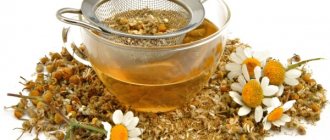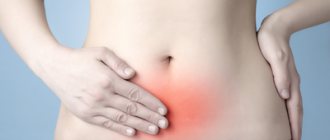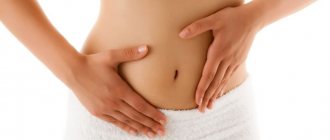Causes
Abdominal cramps can occur under various pathological conditions. The most common are:
- Increased gas formation. Typically, the deviation develops when the diet is violated (consuming large amounts of legumes, cabbage, juices and carbonated drinks). The increasing volume of air in the intestines causes overstrain and stretching of the smooth muscles, which, trying to return to their original position, contract.
- Impaired movement of feces. With constipation, food particles accumulate in separate parts of the large and small intestines and put significant pressure on its walls. Increased afferent impulses cause muscle contraction. With diarrhea, the mechanism is reversed - significant secretion of fluid into the lumen of the gastrointestinal tract promotes hypermotility, which manifests itself externally as spastic pain.
- Stress and neuropsychic disorders. Against the background of these conditions, discoordination of the activity of the central nervous system develops. As a result, inadequate efferent impulses to various parts of the gastrointestinal tract occur.
- Acute inflammatory processes. The affected intestinal wall reacts reactively to the movement of feces and the muscles contract.
- Renal colic. Any disorders of the kidneys can excite local pain receptors (in the ureters, bladder, pyelocaliceal system). Due to the irradiation of excitation, muscle cells contract.
- Uterine disorder. The reproductive organ is a large muscle in our body. With various pathologies (from neoplasms to menstrual irregularities and infections), spasms of the intestines and abdomen may occur.
- Spasms of the sphincters (esophageal, Oddi) and cystic ducts. In pathologies, usually caused by dysregulation and the appearance of hyperplastic processes, “muscle valves” begin to work inadequately, which is expressed by pain.
- Gastric colic. The presence of open lesions of the organ leads to the fact that gastric juice irritates the stomach wall and causes sharp pain, in response to which the stomach wall contracts.
- Changes in normal intestinal microflora. The growth of opportunistic and pathogenic microflora contributes to the development of inflammatory changes in the mucous membrane, and their toxins cause spasms and contractions of the smooth muscles of the abdomen.
Types of spasms
Depending on the number of areas involved, pain can be:
- limited (no more than 1 square abdomen);
- widespread (2 or more quadrants).
Depending on the duration:
- periodic (quickly arise and stop);
- constant (pursues all the time).
According to the severity of pain there are:
- low intensity;
- medium intensity;
- expressed.
Painful sensations, in some cases, can disrupt a person’s normal functioning (inability to change body position, move, etc.) Accordingly, spasms can be:
- with impaired functioning;
- without disruption of life.
There are also:
- with irradiation;
- without irradiation.
Irradiation is the spread of pain beyond the affected segment due to the close proximity of nerve fibers innervating different parts of the body.
When to see a doctor
In many cases, abdominal cramps go away on their own and do not cause serious problems. However, severe and frequent cramping may indicate a more serious condition and should be evaluated by a doctor.
A person needs to go to the hospital if they experience the following symptoms:
- blood in the stool;
- chest pain;
- difficulty breathing;
- emotional problems associated with spasms;
- fever;
- severe pain;
- vomiting;
- skin that has a yellow tint;
- weight loss.
Possible diseases and symptoms
The reasons leading to abdominal cramps are many, the most common ones are presented in the table.
| Name of pathology | Clinical picture |
| Acute intestinal infection, toxic infections | Spastic pain - in the initial stages. Then nausea and vomiting follow. The pain becomes constant and becomes acute. Possible fever and dehydration |
| Acute appendicitis | In the initial stages, spasms are observed in the epigastric region. Then they gradually descend into the iliac region of the abdomen on the right and are replaced by aching, dull or sharp. Body temperature rises. |
| Malignant and benign neoplasms | In the initial stages, rare spasms occur in one part of the intestine. As the tumor grows, its frequency, strength and duration increases. In the later stages, the pain is dull and aching. There may be intestinal bleeding (stool turns black), fever (up to 37-37.5 degrees), cachexia (weight loss). |
| Peptic ulcer of the stomach and duodenum | Pain may occur in the stomach area 30-90 minutes after eating food. If absorption processes are disrupted, intestinal motility changes - pain in any part of the abdomen. |
| Nephroptosis, urolithiasis, pyelonephritis | Spasms can be in the right and left parts of the abdomen, as well as in the lumbar region. Less often - all over the abdomen or encircling. If infected, there is a rise in body temperature, symptoms of intoxication (weakness, headache). After the attack, the spasms stop |
| Miscarriage, uterine bleeding, heavy menstruation | Against the background of incoordination of contractions of different parts of the uterus, painful sensations arise that can spread to the entire abdomen. |
| Dysbacteriosis | Against the background of constant diffuse dull pain of low intensity, sharp and strong spasms occur in the lower abdomen, which stop after a few minutes. May experience: diarrhea, constipation, nausea, vomiting, heartburn. |
| Sphincter of Oddi dysfunction | Abdominal pain in the right hypochondrium occurs periodically. Accompanied by bitterness in the mouth, nausea and vomiting. |
| Gastroesophageal reflux | After eating, gastric contents are thrown into the esophagus. Against the background of irritation, its walls contract. Spasms are localized behind the sternum, in the epigastrium and in the navel area. |
| Psychogenic disorders (stress, depression, psychasthenia) | In addition to mental disorders, there may be short-term spasms and pain in any part of the abdomen, followed by constipation or diarrhea. |
Colic
Stomach cramps should not be confused with abdominal colic, the symptoms of which are similar, but there are differences in the clinical picture. With colic, the pain occurs acutely, is cramping in nature and is concentrated near the navel. The intensity of the pain decreases with pressure on this area. The position of the patient in the “fetal” position, that is, the knees are pulled to the chin, brings relief due to a decrease in pain.
Diagnostics
The first auxiliary sign indicating the affected organ is the localization of pain. Then the doctor begins palpation (the affected organs are painful) and auscultation (listening to the sounds of mass movement through the intestines). To accurately determine the causes of pain, additional research methods are prescribed:
- General blood analysis. With inflammation, ESR and leukocyte levels increase. An increase in the number of neutrophils will indicate a bacterial etiology, and an increase in the number of lymphocytes will indicate a viral etiology. In the presence of bleeding, the level of red blood cells and hemoglobin decreases.
- General urine analysis. An increase in leukocytes, red blood cells, and casts in the urine is a sign of an inflammatory process in the urinary system.
- Fecal occult blood test. The test is aimed at detecting minor bleeding.
- Blood chemistry. The contents of amylase and lipase (increase with damage to the pancreas), AST and ALT (indicators of liver destruction), bilirubin (concentration changes with pathology of the gallbladder and biliary tract) are assessed.
- Ultrasound of the abdominal organs. Using ultrasound, the condition of parenchymal organs (kidneys, liver, spleen, pancreas) is assessed.
- Survey radiography of the abdominal organs. The method detects gas accumulation (in case of perforation of an ulcer), intestinal obstruction (for example, in case of tumors), and the presence of fluid accumulation in the abdominal cavity (in case of bleeding or heart failure).
- FGDS. A flexible endoscope with a camera inserted into the stomach allows you to assess the condition of the mucous membrane of the esophagus, stomach and duodenum.
- Colonoscopy. The procedure is similar to FGD, but the probe is inserted through the anus and the rectum and colon are visualized.
- CT and MRI are the most informative methods. Allows you to assess the nature of the lesion with millimeter accuracy.
Colorectal cancer detected by colonoscopy
Drugs: method of use and mechanism of action
The main drugs used for spastic pain are:
| Name of the medicine | Indications | Mechanism of action | Mode of application |
| Atropine, Platifilin | Acute inflammatory diseases of the upper intestines, pancreas and biliary tract, renal colic. | They block M-cholinergic receptors, preventing the conduction of impulses. | To eliminate an attack - 1 ml intramuscularly. |
| Mebeverine | Inflammatory bowel disease, functional dyspepsia. | Blocks smooth muscle sodium channels, causing membrane depolarization and impaired contraction | Take 1 tablet orally in the morning and evening. |
| Otilonium bromide | Motor disorders of the gastrointestinal tract due to peptic ulcer disease, tumors. | Disturbs the passage of calcium ions from the intercellular space into myocytes, as a result the cells do not contract | Orally 1 tablet 1 time per day |
| Drotaverine, Papaverine, No-Shpa. | Urolithiasis, peptic ulcer of the stomach and duodenum, dyskinesia of the gallbladder. | Suppresses the activity of the enzyme - phosphidediesterase, which is involved in the contraction of smooth muscle cells | 1 tablet 3 times a day |
| Phenobarbital | Severe spastic pain of any location and etiology. | Affects the autonomic centers of the brain, causing a general anticonvulsant effect (relaxation of all muscles). | 1 tablet (100 mg) up to 3 times a day |
Folk remedies for abdominal cramps
As a supplement to medications, be sure to use an alternative direction - folk remedies.
- Chamomile tea. Take 1 tsp. dry chamomile. Brew in 1 tbsp. boiling water Take 3 times a day.
- A decoction using centaury, St. John's wort and cucumber. Mix the herbs. Take 1 tbsp. composition, pour a glass of boiling water. When the product is infused, take 100 ml 3 times a day.
- Mint tea. Pour boiling water over mint (1 tbsp). Take every day up to 4 times.
- Decoction with gooseberries. Pour boiling water (300 g) over the gooseberries. Boil, cook for no more than 10 minutes. Drink 250 ml 3 times a day.
- Tincture made from calendula. To relieve spasms, dissolve the tincture in 50 g of water (add 50 drops in total).
Chamomile
The following methods will help you relieve pain from abdominal cramps and get rid of them completely:
- Drink a decoction of berries every day. To prepare, use blueberries, blackcurrant leaves, plums and gooseberries.
- Drink vegetable oil every 2 hours (1 tsp is enough). After this, drink a mint or chamomile infusion.
- Take meadowsweet, St. John's wort, walnut partitions, nettle. All components must be the same. Fill with water, boil, leave until completely cool. Drink after 1 hour. One dose is equal to half a glass.
Decoction
If spasms are not a symptom of some pathology, then you need to go on a diet. Balance your diet, exclude fatty, spicy, fried foods. To get rid of cramps forever, divide your diet into 5 meals. Portions should be of such a size that after them you feel a slight feeling of hunger. We also advise you to be less nervous and avoid stressful situations.
We hope you will be interested in other useful health topics:
- Somniloquy or why people talk out loud in their sleep
- How and when to tell your first child about your mother’s pregnancy
- Gestosis in pregnant women: causes, symptoms, treatment
- Fear of getting sick is what a phobia
- Eating every other day: rebooting your metabolism and losing weight










